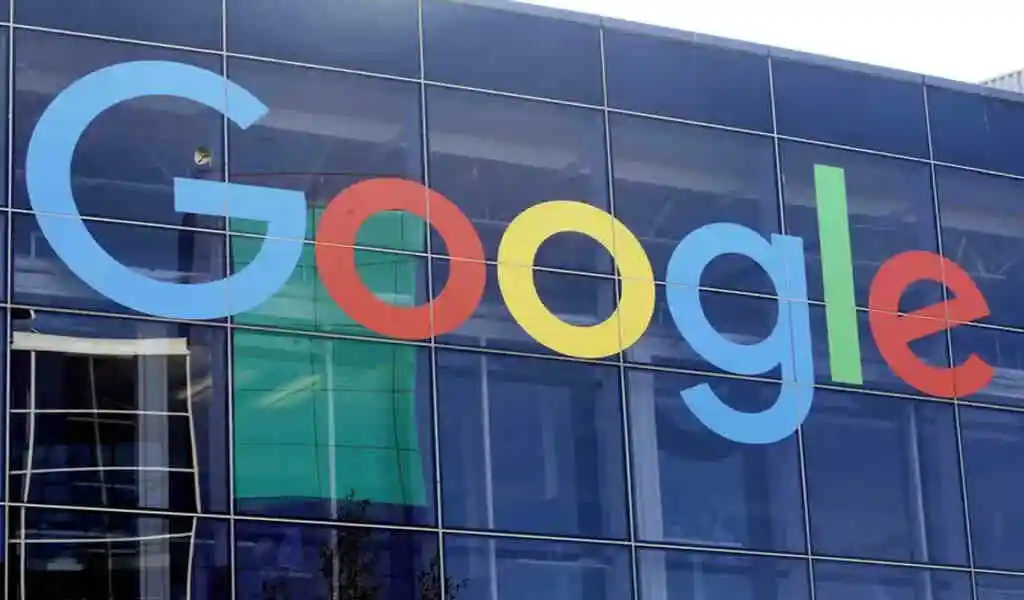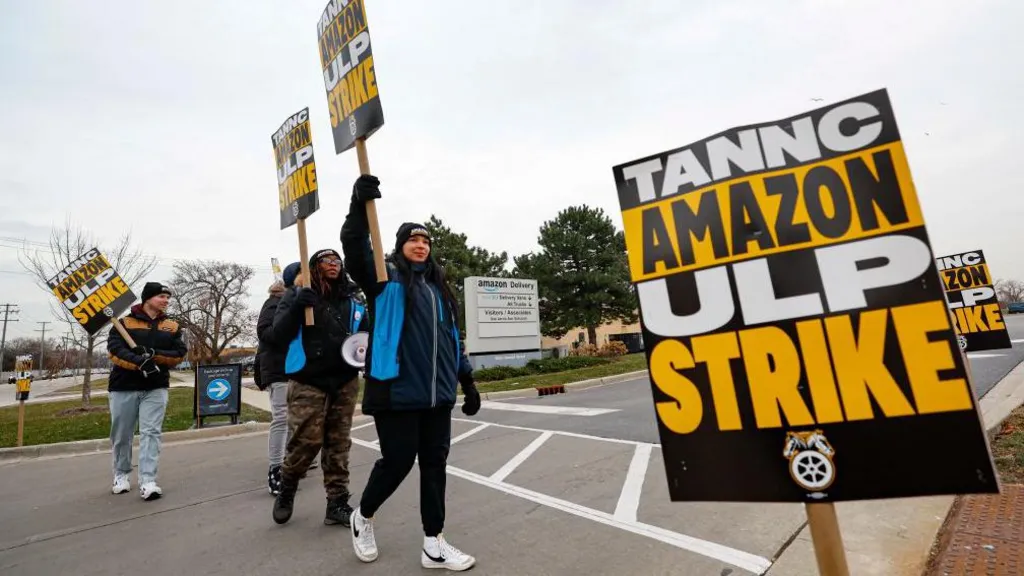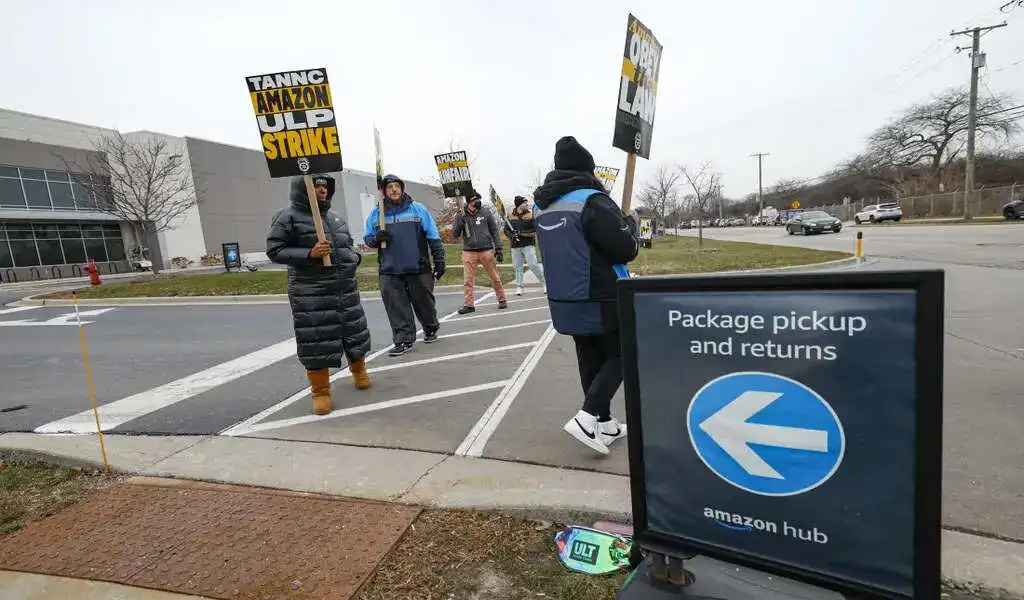Business
Google Agrees To First-In-The-Nation Deal To Fund California Newsrooms Over 5 Years, But Journalists Are Calling It A Disaster

Google reached a first-in-the-nation agreement with California lawmakers on Wednesday to subsidize newsrooms in the state and end proposed legislation that would have required technology companies to pay for the right to distribute news content. However, the pact was immediately criticized by journalist unions, who labelled it “disastrous.”
The plan asks for a $250 million contribution from Google and the state over five years, with the bulk going to fund California newsrooms, as well as the development of an artificial intelligence “accelerator” to help journalists do their jobs.
According to the proposed cooperation, Google will donate up to $15 million to a media fund in the first year, while California will commit $30 million. During the next four years, California’s contribution will be reduced to $10 million per year, while Google will contribute at least $20 million to the fund and existing journalism programs.
Google Agrees To First-In-The-Nation Deal To Fund California Newsrooms, But Journalists Are Calling It A Disaster
The agreement kills a high-profile bill known as the California Journalism Preservation Act, which would have required technology companies such as Google (GOOGL) and Meta (META) to pay news organizations to distribute their content online. The initiative, supported by state assemblymember Buffy Wicks, is modeled after similar legislation passed in Australia and Canada. It provides financing to local news organizations whose business models have collapsed due to the rise of giant tech platforms.
“As technology and innovation advance, it is critical that California continues to champion the vital role of journalism in our democracy,” Wicks said in a statement announcing the collaboration with Google. “This alliance demonstrates a cross-sector commitment to supporting a free and thriving press, allowing local news outlets across the state to continue their critical work. This is only the beginning. I remain dedicated to finding new ways to support journalism in our state for many years to come.”
California Gov. Gavin Newsom, who had not publicly weighed in on the bill, praised the deal as “a major breakthrough in ensuring the survival of newsrooms and bolstering local journalism across California — leveraging substantial tech industry resources without imposing new taxes on Californians.”
News publishers have struggled immensely in recent years, losing thousands of jobs and forcing the closure of some venues entirely as advertising budgets and viewers switched away from traditional media.
Ironically, the deal announced Wednesday also promoted a so-called “National AI Innovation Accelerator,” which includes funding for the development of artificial intelligence. Some journalist groups have warned that artificial intelligence poses a threat to the future of their industry and threatens to further erode trust in news reporting.
The agreement was supported by the California News Publishers Association, which represents hundreds of news organizations, Google’s parent company, and OpenAI. However, it was strongly criticized by unions representing the state’s journalists, who had supported Wicks’ measure to subsidize newsrooms but were not included in the agreement.
“The future of journalism should not be decided in backroom deals,” a joint statement from the Media Guild of the West, The NewsGuild-CWA, and others said. “The Legislature tried unsuccessfully to regulate monopolies. We now ask whether the state has done more harm than good. California’s journalists and news workers strongly oppose this terrible arrangement with Google and condemn the news executives who approved it in our name.”
The deal also faced blowback from other Democrats in the California legislature, including state Sen. Steve Glazer, who had proposed a bill to provide tax credits to news outlets employing full-time journalists.
“Despite the good intentions of the parties involved, this proposal does not provide sufficient resources to bring independent news gathering in California out of its death spiral,” Glazer said Wednesday during a press conference. “Google’s offer is completely inadequate and massively short of matching their settlement agreement in Canada in supporting on-the-ground local news reporting.”
California State Senate President Pro Tempore Mike McGuire also criticized the agreement, stating, “Newsrooms have been hollowed out across this state while tech companies have made multibillion-dollar profits. We are concerned that this proposal does not provide adequate money for newspapers and local media or address the industry’s imbalances.
The agreement comes months after Google decided to ban news content in California due to Wicks’ planned rule, prompting a rapid outcry from the state’s press outlets.
Google Agrees To First-In-The-Nation Deal To Fund California Newsrooms, But Journalists Are Calling It A Disaster
The News/Media Alliance, representing US newspapers and online publishers, said it has written to the Department of Justice, the Federal Trade Commission, and the California Attorney General, requesting an investigation into whether Google violated any laws by limiting access to news sites.
Google previously threatened to take similar action in Canada ahead of the country’s new law requiring digital platforms to compensate news publishers for their work but eventually backed down. Under Canada’s Online News Act, Google will pay $74 million per year into a fund that will be dispersed to publishers.
“Google is the biggest source of referral traffic on the internet. When you are conducting journalism on the internet, you have to do business with Google,” Media Guild of the West President Matt Pearce said after Wednesday’s announcement. “The premise of these bills is that if we are going to be dominated by a monopolist whose product we cannot escape, except at enormous cost to our own business, that monopoly needs to pay its fair share for our journalism.”
SOURCE | CNN
Business
Sonic the Hedgehog Dominates Christmas Wish Lists

Sonic the Hedgehog is dominating Christmas wish lists this year. The lovable blue hedgehog is back in the spotlight, from sonic the hedgehog toys and games to sonic the hedgehog coloring pages and movie hype.
Sonic-themed holiday merchandise is on fire, from quirky sweaters to action figures flying off shelves. Sonic the Hedgehog Christmas outfits for kids are selling out fast, making them a go-to gift option for festive fun.
Retailers have been quick to recognize Sonic’s holiday appeal. Special promotions and exclusive items, like the Sonic holiday t-shirts, are everywhere.
Everyone’s stocking up on Sonic merchandise, from big-box stores to boutique retailers.
Online shopping platforms are seeing a surge in searches for Sonic items. Whether it’s Sonic Christmas-themed tops or Sonic the Hedgehog coloring pages, Sonic the Hedgehog toys or Sonic and the Hedgehog 3, the demand is skyrocketing.
Retailers who tap into this trend are sure to see strong holiday sales.
Sonic has been around since the early 90s, but his popularity never wanes. With the release of Sonic 3, fans are more excited than ever.
Sonic the Hedgehog 4
Meanwhile, Paramount Pictures is preparing “Sonic the Hedgehog 4,” with the newest addition in the family-friendly genre set for a spring 2027 release.
The announcement comes as “Sonic 3” opens in theatres on Friday, estimated to gross $55 million to $60 million from 3,800 North American locations.
The sequel is shaping up to be a good holiday season blockbuster for Paramount, which explains the desire in future “Sonic” adventures. On the international front, the film will be released on Christmas Day in 52 markets.
On Rotten Tomatoes, critics gave “Sonic 3” an outstanding 87% fresh score.
The first two films grossed a total of $725.2 million at the global box office and generated over $180 million in global consumer expenditure through home entertainment rentals and digital purchases.
They also inspired a spinoff Paramount+ series, “Knuckles,” which premiered earlier this year.
Related News:
Man Creates Candy Cane Car to Spread Christmas Cheer
Business
Amazon Strike Called By Teamsters Union 10,000 Walkout

An Amazon strike has hit facilities in the United States in an effort by the Teamsters union to pressure the corporation for a labour agreement during a peak shopping season.
The Teamsters union told the Associated Press that Amazon delivery drivers at seven facilities in the United States walked off the job on Thursday after the firm failed to discuss a labour contract.
According to the union, Amazon employees in Teamsters union jackets were protesting at “hundreds” of additional Amazon facilities, which the union billed as the “largest strike” in US history involving the company.
The corporation, which employs over 800,000 people in its US delivery network, stated that its services will be unaffected.
It was unclear how many people, including members of Germany’s United Services Union, participated in Thursday’s demonstration. The Teamsters union reported that thousands of Amazon employees were implicated in the United States.
Amazon Strike at 10 Locations
Overall, the group claims to represent “nearly 10,000” Amazon strikers, having signed up thousands of people at roughly ten locations across the country, many of whom have joined in recent months.
The organization has claimed recognition from Amazon going on strike, claiming the firm illegally neglected its obligation to bargain collectively over salary and working conditions.
The Teamsters is a long-standing US union with nearly one million members. It is well-known for securing lucrative contracts for its members at companies like delivery behemoth UPS.
Most of the Teamsters’ Amazon campaigns have concerned drivers working for third-party delivery companies that partner with the tech behemoth.
Amazon denies that it is liable as an employer in those circumstances, which is a point of legal contention. In at least one case, labour officials have taken a preliminary stance in favour of the union.
Stalled Contract Negotiations
Amazon employees at a major warehouse on Staten Island in New York have also chosen to join the Teamsters. Their warehouse is the only Amazon facility in the United States where labour officials have formally recognized a union win.
However, the Amazon strike is because contract negotiations have not progressed since the 2022 vote. It was not one of the areas scheduled to go on strike on Thursday.
Amazon, one of the largest employers in the United States, has long received criticism for its working conditions and has been the target of activists seeking to gain traction among its employees.
Related News:
Amazon Releases Nova, a Fresh Set of Multimodal AI Models.
Business
Amazon Encounters Numerous Strikes As Unions Aim At The Holiday Shopping Surge.

(VOR News) – Thousands of Amazon employees at various sites across the country were scheduled to go on strike on Thursday in an effort by the Teamsters union to pressure the retail behemoth to acknowledge its unionised workers in the United States.
The walkout is expected to concentrate on seven Amazon locations across the country during the holiday purchasing surge and may be the most significant union action against Amazon in the nation’s history.
The business announced on Thursday morning that there had been no effect on operations. It also stated that it is “continuing to concentrate on fulfilling customers’ holiday orders.”
The International Brotherhood of Teamsters maintains that it represents more than 10,000 Amazon employees and contractors in aviation centres, warehouses, and delivery centres.
Amazon has refused to acknowledge the union for many years.
The retail giant, which employs approximately 1.5 million individuals, excludes contractors and part-timers. A strike has been initiated by delivery couriers and warehouse employees at seven distinct locations in order to exert pressure on the company to negotiate a collective bargaining agreement that would encompass modifications to compensation, amenities, and working conditions.
Picketing was intended for New York, Atlanta, Los Angeles, San Francisco, and Skokie, Illinois.
Also, the Teamsters assert that they are establishing picket lines at “hundreds” of additional warehouses and delivery centres by encouraging non-unionized workers to picket under U.S. labour law, which protects workers’ ability to take collective action to further their interests.
“Amazon workers are exercising their power,” Randy Korgan stated to NPR.
“They now realise there is a pathway to take on a corporate giant like this – and that they hold the power.” Amazon responds by accusing the Teamsters of fabricating information regarding the strikes, asserting that the participants are “entirely” outsiders rather than employees or subcontractors of the corporation.
Amazon spokesperson Kelly Nantel stated that “the reality is that they were unable to secure sufficient support from our employees and partners and have invited external parties to harass and intimidate our team.” For more than a year, the Teamsters have been intentionally misleading the public by claiming to represent “thousands of employees and drivers.” They do not.
The Teamsters did not provide a specific duration for the strike; however, they informed NPR that it would extend beyond one day. Workers would receive $1,000 per week in strike money, as per the union.
Teamsters President Sean O’Brien issued a statement in which he stated, “If your package is delayed during the holidays, you can attribute it to Amazon’s insatiable greed.” We established a firm deadline for Amazon to attend the meeting and treat our members equitably. They disregarded it.
The Teamsters granted until December 15 to convene with its unionised employees and develop a collective bargaining agreement.
Amazon has opposed all unionisation efforts in court, asserting that unions were not advantageous to its employees and emphasising the compensation and benefits that the organisation currently provides.
Amazon has been accused of discriminatory labour practices on numerous occasions, including the termination of labour organisers. Furthermore, it has disputed its official status as a contract employer.
Teamsters organize Amazon delivery couriers and other employees.
In June, Amazon established its first unionised warehouse in Staten Island, New York, two years after making history by voting to join the fledgling Amazon Labour Union, which is also affiliated with the Teamsters.
The union is one of the most influential in the United States and Canada, with 1.3 million members. On Thursday, the German United Services Union declared that Amazon employees in Germany would participate in a strike in conjunction with their American counterparts.
In the past, Amazon has experienced demonstrations in Germany and Spain that were related to the holiday season in order to advocate for improved wages and working conditions.
“The holiday season has arrived.” Delivery is anticipated. Patricia Campos-Medina, the executive director of Cornell University’s Worker Institute, asserts that “this is the moment in which workers have control over the supply chain.”
The Teamsters have reported that Amazon’s profits have increased both during and after the pandemic. The corporation is currently valued at over $2.3 trillion, with net income of $15 billion in the most recent quarter alone. It is the second-largest private employer in the United States, following Walmart.
SOURCE: NPR
SEE ALSO:
SoftBank Is Courting Trump With a Proposal To Invest $100 Billion in AI.
TVA News Montreal Becomes Most-Watched News Source in Quebec
-
Politics4 weeks ago
Miller Expects 4.9 Million Foreigners to Leave Canada Voluntarily
-
News3 weeks ago
Nolinor Boeing 737 Crash Lands in Montreal
-
News3 weeks ago
“Shocking Video” Vancouver Police Shoot Armed Suspect 10 Times
-
Tech4 weeks ago
Increasing its Stake in OpenAI by $1.5 Billion is a Possibility for SoftBank.
-
Tech3 weeks ago
Canadian Media Firms Are Suing OpenAI in a Potential Billion-Dollar Dispute.
-
Finance2 weeks ago
Chrystia Freeland Promises Mini-Budget By Dec 16th




























